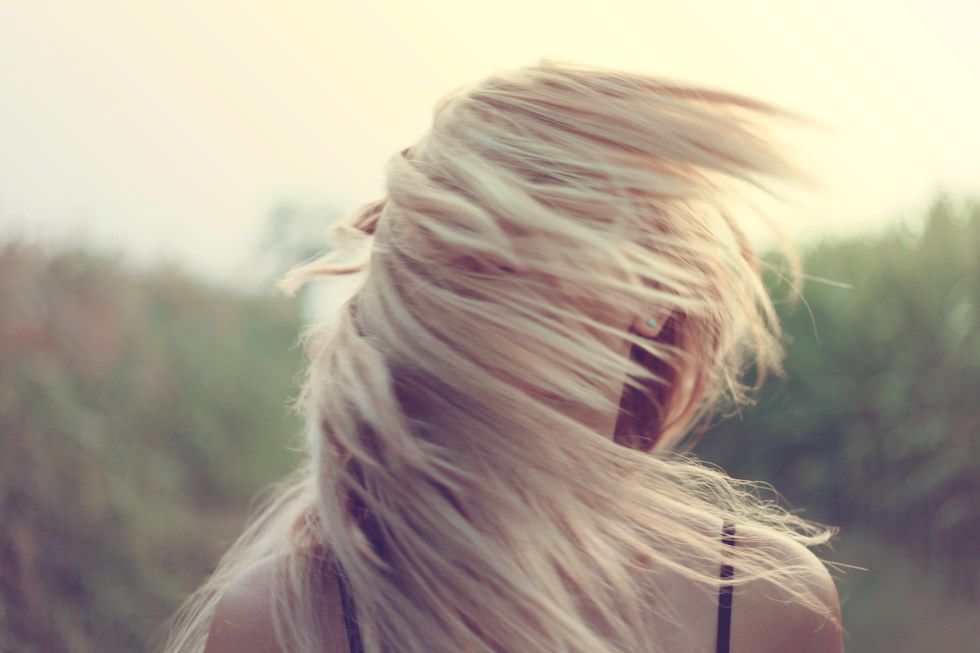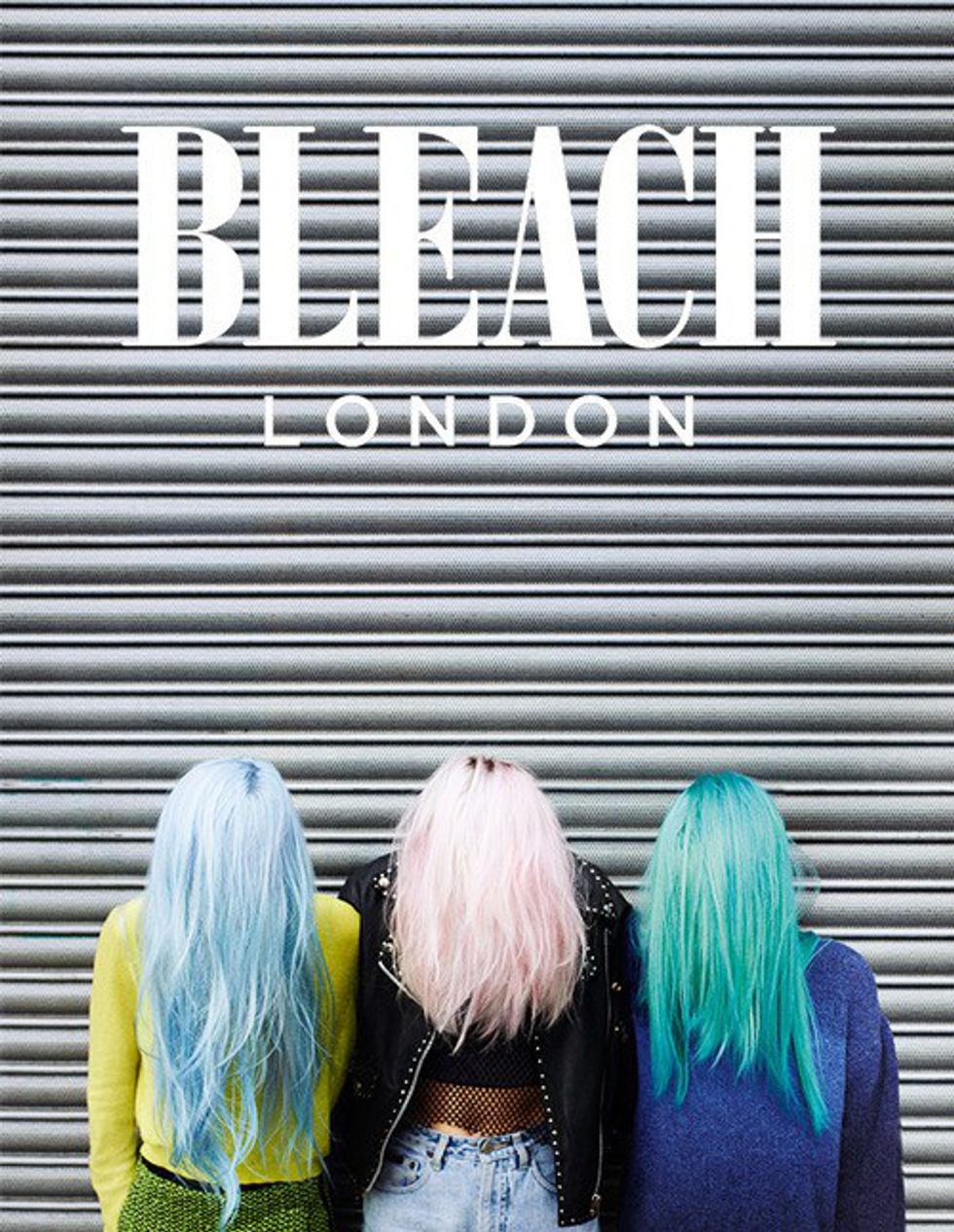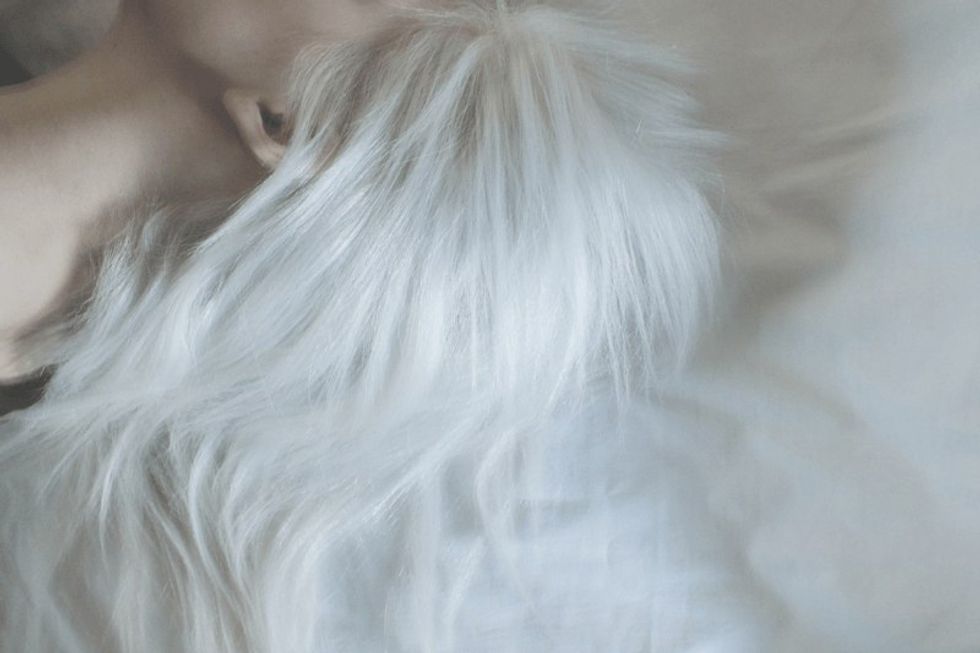Over the past few years, the hair trend sweeping across almost all parts of the world essentially takes mystical to a whole new level: the ‘elusive unicorn’ level. (Blame Daenerys.)
While having white or silver hair isn’t necessarily a new phenomenon per se, newer, younger demographics seem to be adopting the look well before its natural progression. If we’re to review a bit of color theory here, while the color black can be simplified as the absorption or presence of all color, white is the opposite. Rather, it’s devoid of color.
As you may have guessed, achieving a “devoid of all color” look involves an inordinate amount of color stripping. In other words, it's a bleach party (for lack of a better word) on your head. Being a bit of an adventurous soul and self-proclaimed hair dye addict, I gave my head the full silver treatment a little over a year ago. Luckily, I’m not afraid of commitment; and what a commitment it has been. If you’ve decided to assume your unicorn persona, congratulations. You are a courageous soul who’s willing to take risks in the name of cool hair. Read on for some hopefully helpful tips to make sure your hair stays looking magical…and, you know, on your head.
First, if you have virgin hair, think this decision through about 48.2 more times.
There’s nothing wrong with dyeing your hair. It’s expressive, it’s fun, and it’s a safe form of change to spice things up. However, virgin hair (i.e. hair free from any chemical processes) is a bit rare nowadays. Also, as most hairdressers, and anyone to whom you say “I think I want to dye my hair,” will warn you, you will never get back to your natural hair color once you dye it. Granted, if you spend several years afterward free from any more hair dye and grow out your locks, then it’s a possibility. Regardless, just be sure you’re ready to kiss the natural goodbye for a while.
Second, understand that bleaching to this degree should be a slow process.
Apologies to anyone with hair darker than dirty blonde, as your hair won’t be going white in a day and staying healthy. Pardon me for stating the obvious, but at the end of the day, bleach is still a harsh chemical. The darker hair you have, the longer bleach has to process on your head to achieve a completely white or silver sheen. Thus, as bleach processes longer, your hair becomes more brittle, dry and susceptible to breakage.
It’s much safer to wait about six to eight weeks between bleaching processes. This way, your hair has more time to repair after each session, you’ll get to enjoy some fun colors in between, and your strands won’t break every time there’s a gentle breeze.
Third, choose a hair stylist carefully.
While blonde highlighting abilities are pretty universal among hairstylists, full-on mystical coloring capabilities are not. Heavily research hair salons in your area. View stylists’ portfolios. Go to consultations. If there’s a promising hair stylist a little out of the way, make the trek. A few extra miles are no comparison to a hair nightmare.
For my own bleaching adventures, I traveled all the way across the pond to London, England. Okay, so maybe I was already in London. Regardless, I did my research and chose Bleach London, a cool, edgy salon co-owned by Alex Brownsell and Samantha Teasdale in the East End. My choice was pretty clear after seeing that Bleach specializes in more avant-garde colors and styles. If you ever find yourself in London Town, I recommended booking an appointment with Tasha Spencer. She’s an incredibly talented stylist (read: hair sorceress), she began my silver unicorn journey, and she’s pretty much the coolest person you’ll ever meet.
Fourth, you should probably invest in some silver shampoo, silver conditioner and a gentle hair mask.
When hair color is stripped, yellows and other brassy tones are the last to leave the hair. As a result, even the most bleached hair is prone to those pesky yellow tones peeking out again over time. Silver shampoo is basically a repairing shampoo infused with violet toner. To revisit color theory, since purple and yellow are complementary colors, adding one to the other has a neutralizing effect. The violet toner in silver shampoo will work to neutralize the yellow tones in your hair, keeping the white or silver pristine for longer. Try a sulfate-free silver shampoo, as it lathers a bit less and won’t dry out your hair. Pro-tip: only use silver shampoo and conditioner once or twice a week, depending on how often you wash your hair. Using it too often can make your white turn a bit murky.
As part of the color stripping process, your hair is stripped of some fortifying proteins, making the strands appear a bit thinner and fragile. Investing in a protein hair mask to be used once a week or once every two weeks will help your hair repair itself, regain some lost protein, and feel much smoother. You’re welcome.
Fifth, give it a rest.
For the love of all that is good in this world, leave your hair alone once you finish your bleaching process. You’ve put it through so much, it’s worked hard, and it’s tired. Of course, root touch-ups are normal and to be expected. However, almost immediately post-bleach isn’t the best time to decide you want teal hair and a perm. I’m not saying teal hair and a perm are bad ideas. Rather, I’m saying that keeping your hair on your head may be helpful if you want those hairstyles in the future.
Instead, deep condition, start a relationship with your hair mask, avoid any hair styling hot-tools like your life depends on it, and as Tasha would tell (beg) me, “be gentle with your hair.” Relish in your newfound magical and elusive nature and of course, take a million pictures since you’ll be looking fabulous. Happy bleaching to all, and to all, minimal breakage.








 Photo by
Photo by  Photo by
Photo by  Photo by
Photo by 



















